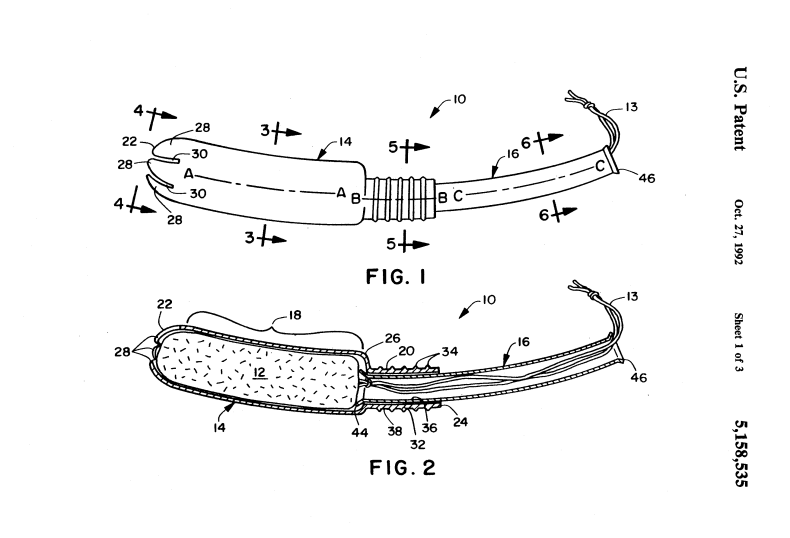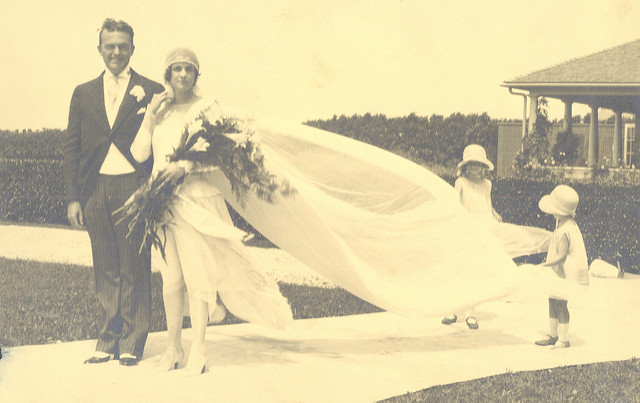
Earlier this week I got an email from my mother. “It appears you are not the only Eveleth interested in women’s undergarments” was the subject line. The body of the email contained a link to this delightful patent that my great great grandmother apparently got on February 13th, 1900. The patent reads:
Be it known that I, ANNIE S. EVELETH, a citizen of the United States, residing at Little Falls, in the county of Herkimer and State of New York, have invented certain new and useful Improvements in Underwaists,of which the following is a specification.
This invention relates to underwaists for women; and the object of the improvement is to provide a waist so constructed as to obviate any pressure upon the breasts of the wearer and also permit of free access to the breasts without necessitating unbuttonin g or disarranging the waist-a feature of great convenience for nursing mothers.
It’s true that I am quite interested in women’s undergarments. And patents. And below you’ll find a post that ran on this here blog about a year ago, about patents for menstrual products that I found delightful, interesting and downright bizarre. The post was inspired by the invention of a chiropractor in Kansas, who came out with a “labial glue” to keep menstrual blood in the vagina. To be clear: this is a very, very bad idea. And I added it to my list of strange period-related patents, which you can find below.
__
I recently wrote a story for Racked about how some of the period underwear on the market work — the kind that either help keep your pad in place, or help replace tampons by wicking and absorbing blood. And because I always like to know about the evolution of various technologies, one of the first things I did in my research was go to the U.S. Patent Office website to see what kinds of patents already existed for these sorts of things.
It turned out that there were a whole lot of patents for menstrual underwear like this. I’ll quote myself here:
The specific materials that Dear Kate and THINX use are new, but idea of specially designed period underwear goes back nearly 40 years. In 1967, a patent for a “protective petticoat” was issued to a woman named Gladys Ruppel Williams. The undergarment was a half-slip, “constructed with a moisture-proof material” to protect the outer clothing from being stained. In 1988, a Chinese company was issued a patent for “woman menstruation underpants” that included two layers of cloth sewn into the crotch of the panties, each lined with a “non-toxic, flexible plastic film.” In 1995 another Chinese company patented a “clean-keeping women undergarment,” which included a leakproof liner.
Yep, “clean-keeping women undergarment.” But these are just a few of the patents for menstruation related items that I found when I started looking. So I want to share some more of them with you. This time with pictures. Because they’re great. Continue reading

 I started crying while doing the dishes last week. Domestic weeping of this kind used to be rarer for me before the Trump election, but I am afraid it is all too common now since, like everyone else, I listen to the news while I do housework.
I started crying while doing the dishes last week. Domestic weeping of this kind used to be rarer for me before the Trump election, but I am afraid it is all too common now since, like everyone else, I listen to the news while I do housework.  And how did we entertain our gentle audience this week? Hopefully with great aplomb, Oxford commas, and the finest of verbs. You be the judges:
And how did we entertain our gentle audience this week? Hopefully with great aplomb, Oxford commas, and the finest of verbs. You be the judges:


